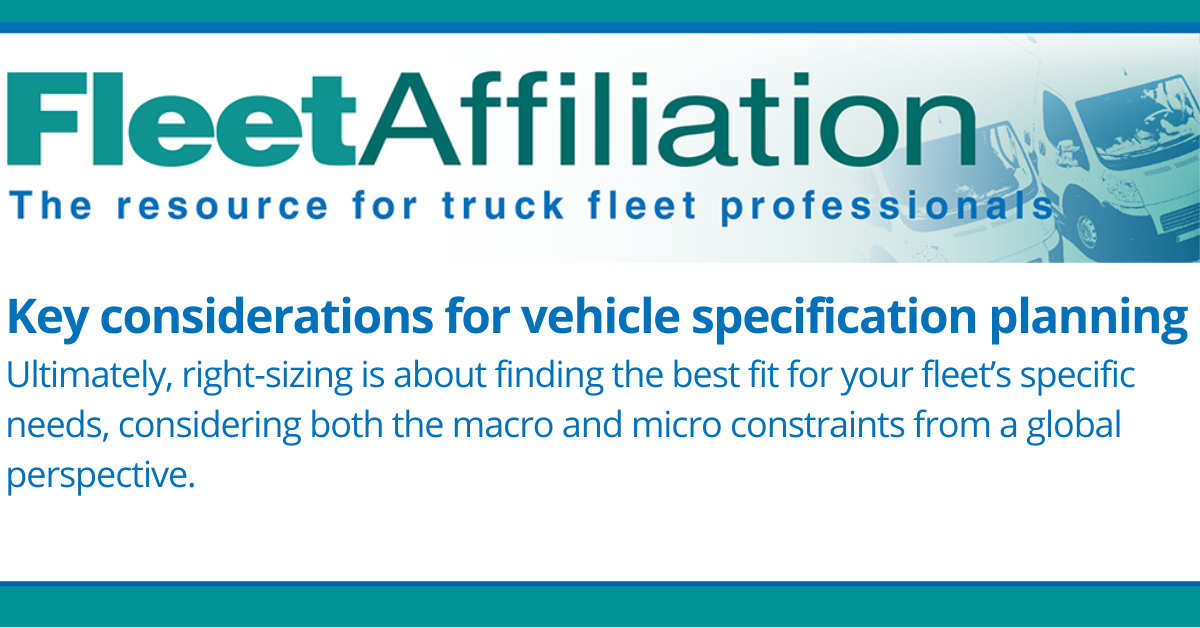
Published in August 2024 Fleet Affiliation
When preparing to order your next fleet of vehicles, it’s crucial to understand the key elements involved in the process. In the past, fleet managers may have relied on historical procurement data and recent manufacturer updates to guide their purchases. However, changes in operational demands and mission profiles, combined with previous concerns about chassis availability and extended lead times, have led many fleets to extend the life cycles of their vehicles. Eventually, replacement becomes inevitable, making this an ideal time to reassess operations, whether out of necessity or opportunity. By following a few strategic steps, you can help ensure your organization selects the most productive commercial vehicles that align with its goals.
Understanding operations
The foundation of a successful fleet specification plan lies in a comprehensive understanding of your operations. As organizations evolve and expand, often driven by technological advancements, their operational needs change as well. When it comes time to replace vehicles and equipment, it’s essential to thoroughly assess how these assets were used in the past and how they will be utilized in the future. This is an opportunity to scrutinize drive and duty cycles and leverage the wealth of available data.
Making data-driven decisions
The data and information at your disposal can be among your most valuable resources. Understanding this data —and the insights it offers — enables informed decision-making. Analyzing your fleet’s drive and duty cycle, usage patterns, breakdown frequency and overall efficiency provides a clear picture of where improvements can be made. With these details, you can tailor vehicle designs to meet your organization’s specific needs.
As vocational vehicles and equipment have become more sophisticated, staying educated about the latest data and information layers is critical. It’s equally important to align your decisions to your organization’s broader objectives, whether you’re working independently, through a fleet management partner, or with support from manufacturers and upfitters. Accurate, reliable data not only improves your bottom line but also enhances overall operational efficiency. Conversely, recognizing unreliable data and taking proactive measures to correct it can prevent costly errors in vehicle design and maintenance. With the right data, you can optimize vehicle maintenance strategies — including preventive and predictive maintenance — improve vehicle design, and ensure your fleet is right-sized for your needs.
The importance of right-sizing
Reevaluating your fleet’s size and configuration can be a strategic advantage. With a clear understanding of your drive and duty cycles, operational requirements and design constraints, you can determine the appropriately sized vehicles for your fleet. The term “right-sizing” often implies reducing or downsizing, such as opting for smaller engine displacements. However, before considering downsizing, it’s important to ensure you’re not overloading components like suspension or towing capacity.
Additionally, consider the possibility of a net reduction in overall fleet size if certain vehicles are upsized. For instance, if you’re making multiple trips with the same truck, a larger vehicle might help reduce the number of trips required. Ultimately, right-sizing is about finding the best fit for your fleet’s specific needs, considering both the macro and micro constraints from a global perspective. While there may be no perfect solution, striving for an optimal configuration is a worthy goal.